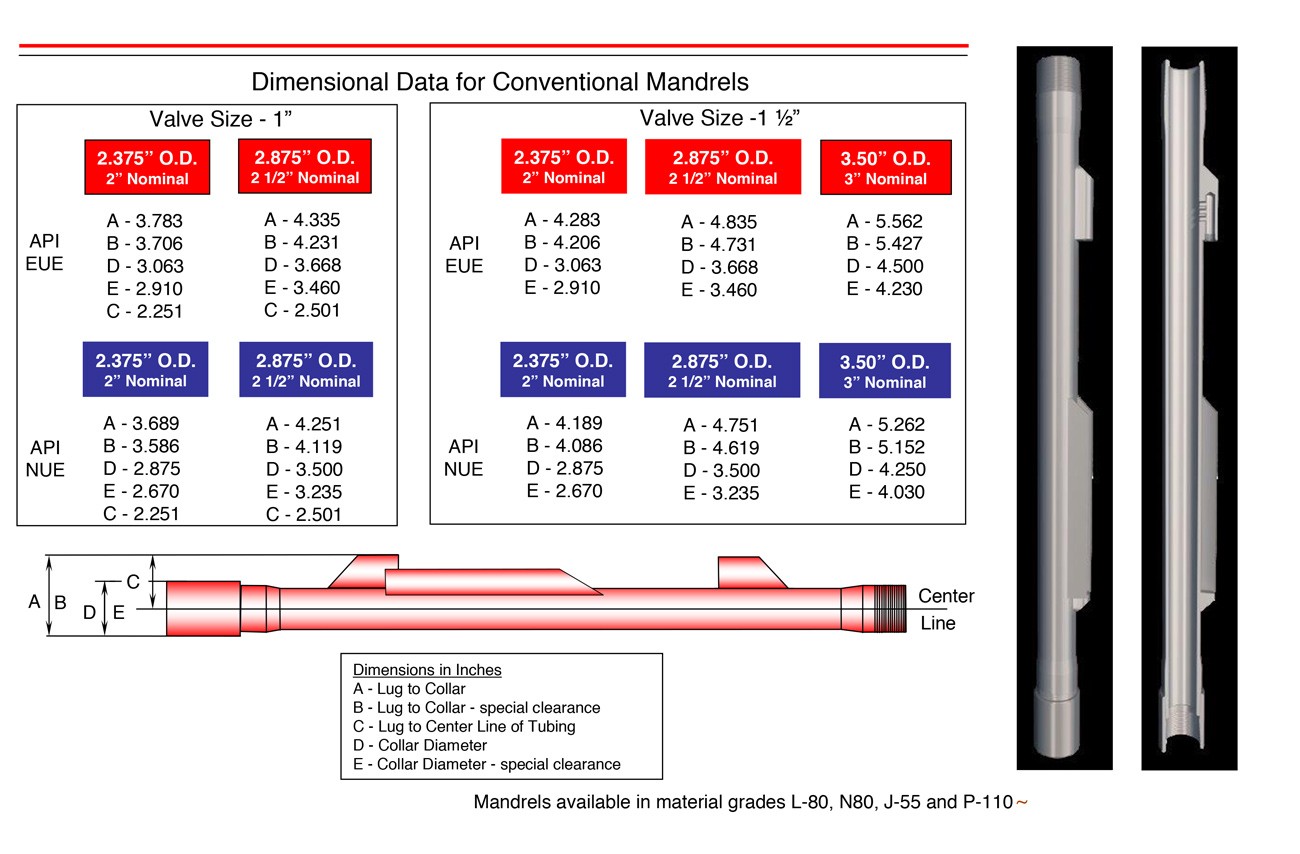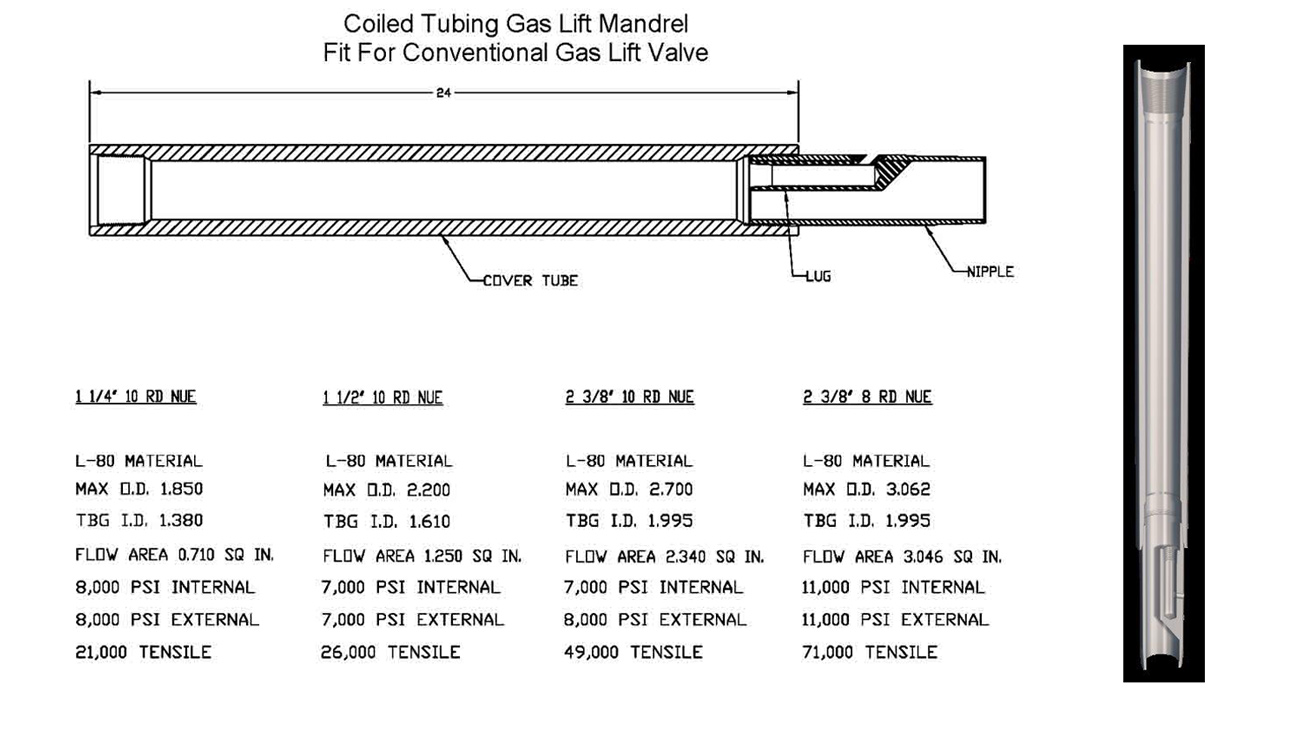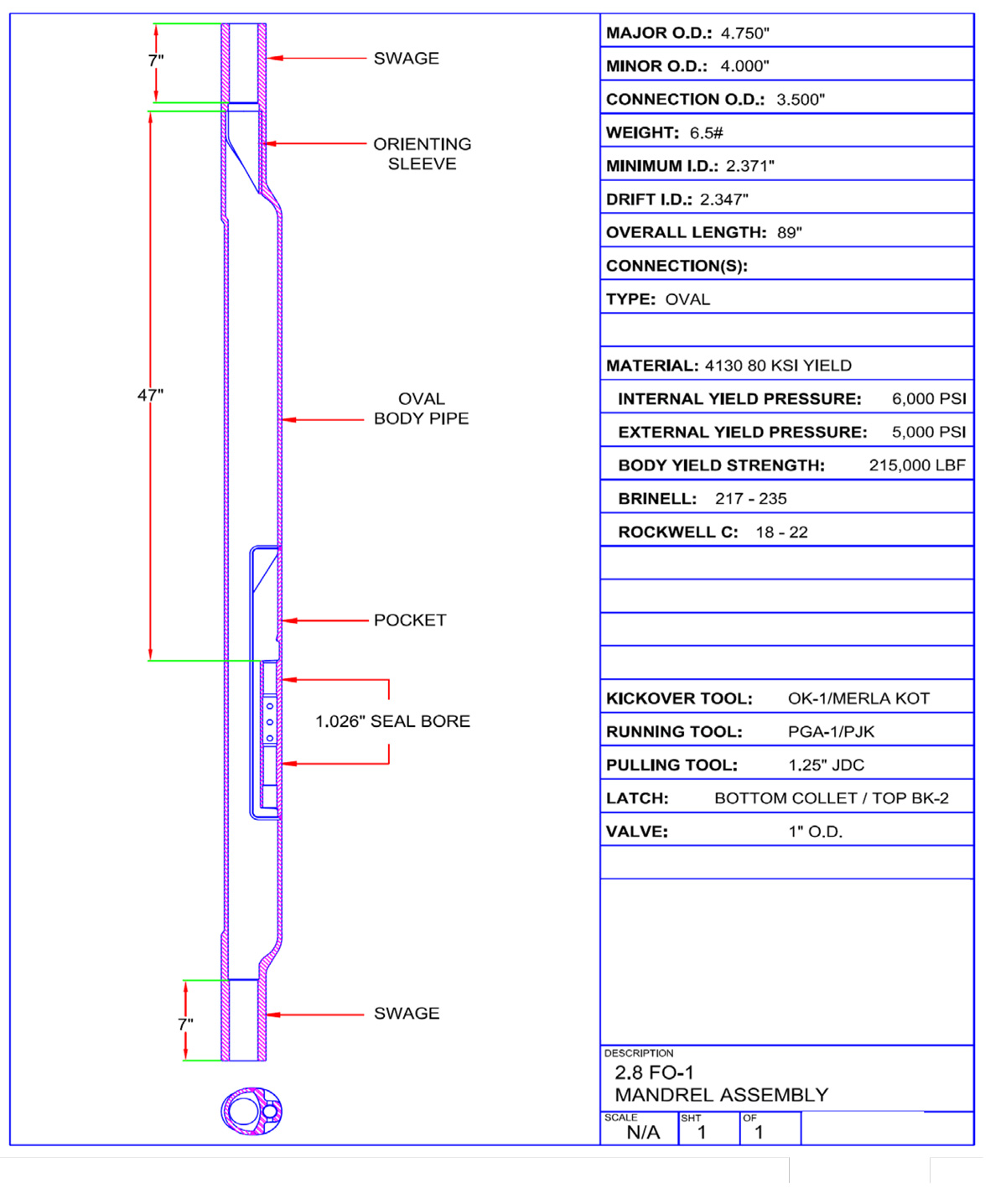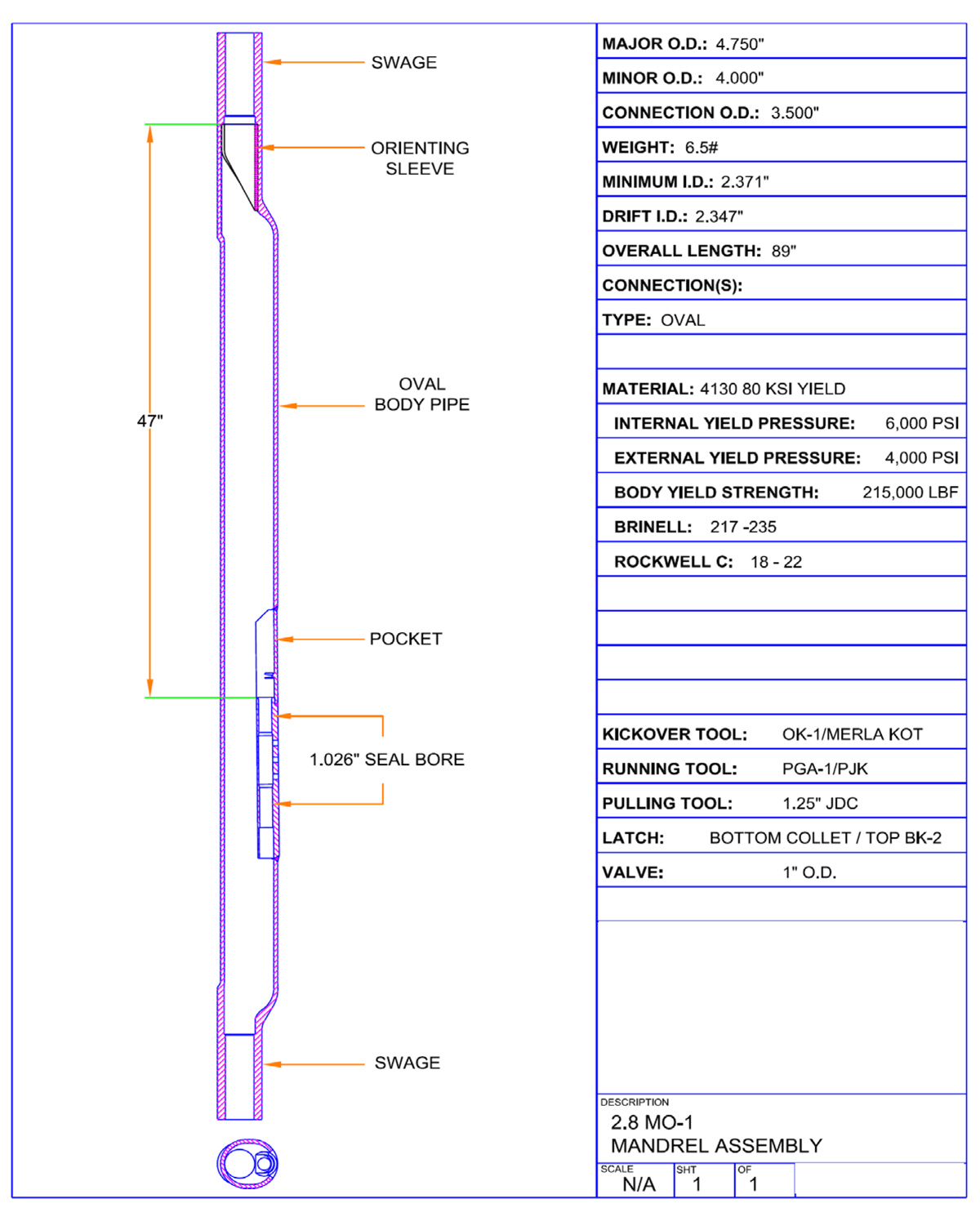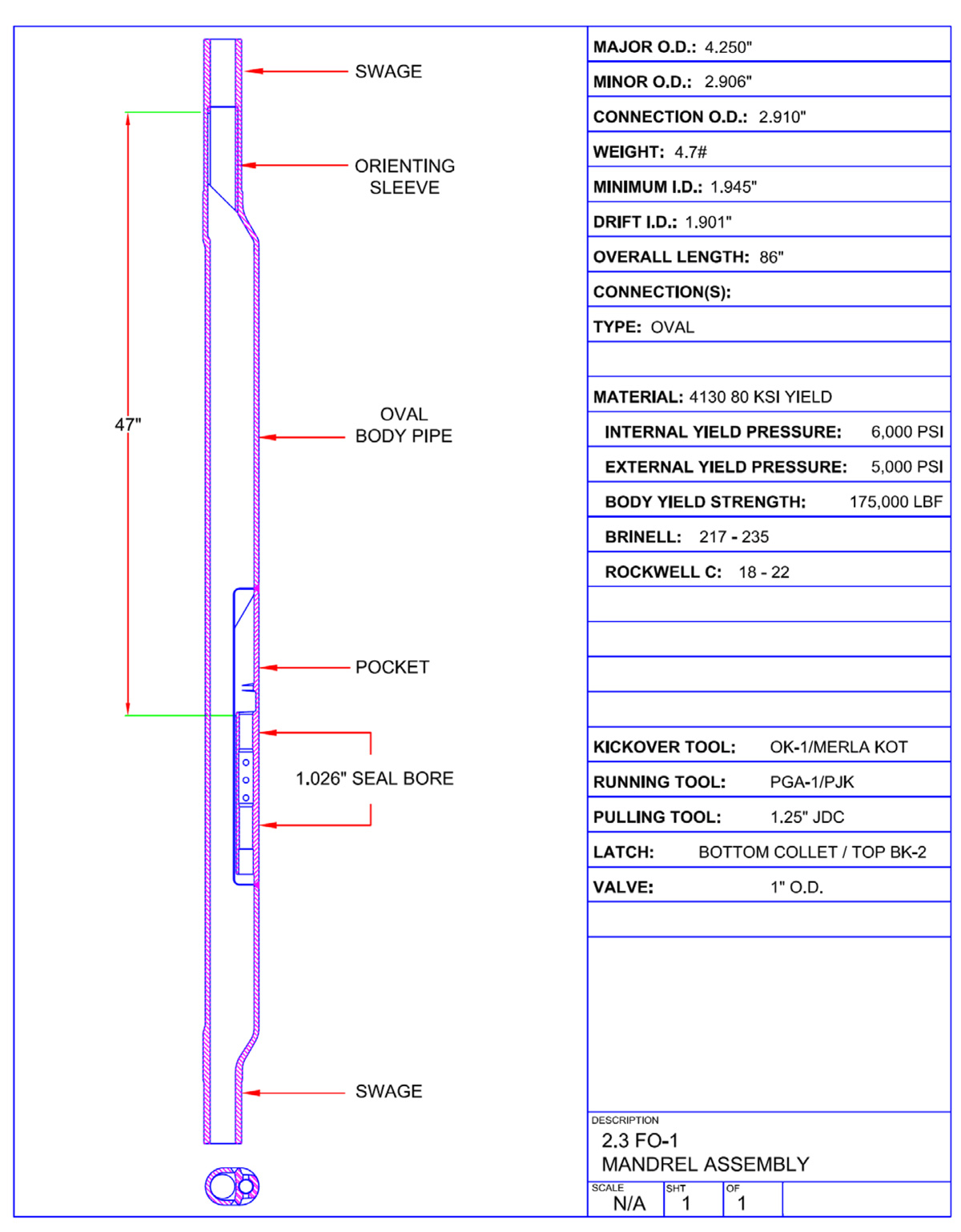with liberty lift, everything is right for you - people, quality, products & service
GAS LIFT SYSTEMS – BUILT TO MAXIMIZE PRODUCTION
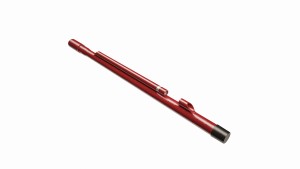 Liberty Lift has developed HyRate™, a patent-pending solution that facilitates BOTH annular and tubing lift without the need for a workover rig. This solves the long-standing problem when flow changes from annular flow to conventional tubing flow as it moves through internally-mounted mandrels. Using the HyRate solution, the conversion from one lift method to another can be accomplished quickly and efficiently with only use of a slickline to pull or replace the bottom tubing plug. The externally-mounted mandrel assembly includes special capsule mandrels that allow annular flow and standard externally mounted conventional mandrels permitting flow up the tubing. Initial operating volumes ranging from a high of 5,000+ bbls/day to as low as 50 bbls/day can be effectively handled by this flexible solution. During later stages, HyRate allows the well to flow unassisted for the remainder of the well’s life-cycle, all with cost-effective rigless wireline interventions.
Liberty Lift has developed HyRate™, a patent-pending solution that facilitates BOTH annular and tubing lift without the need for a workover rig. This solves the long-standing problem when flow changes from annular flow to conventional tubing flow as it moves through internally-mounted mandrels. Using the HyRate solution, the conversion from one lift method to another can be accomplished quickly and efficiently with only use of a slickline to pull or replace the bottom tubing plug. The externally-mounted mandrel assembly includes special capsule mandrels that allow annular flow and standard externally mounted conventional mandrels permitting flow up the tubing. Initial operating volumes ranging from a high of 5,000+ bbls/day to as low as 50 bbls/day can be effectively handled by this flexible solution. During later stages, HyRate allows the well to flow unassisted for the remainder of the well’s life-cycle, all with cost-effective rigless wireline interventions.
SUITABLE FOR UNCONVENTIONAL WELLS & PRODUCTION SITES
The HyRate method can also be valuable in today’s robust unconventional production environment where multiple wells are run from the same well pad and where there are possible frac hits with fluids from offset wells. If these frac hits occur while conventional lift is underway, removal of the transient fluids using through the tubing can be considerably slower than up the annulus. HyRate can quickly unload those fluids by switching to annular flow, once again because of the larger flow area in the annulus. This ability to continually convert the system as needed, from conventional lift to annular lift configuration with only a slickline intervention, is cost-effective, efficient and extends the life of the well and its components.
LET LIBERTY LIFT MAKE YOUR OPERATION MORE PROFITABLE
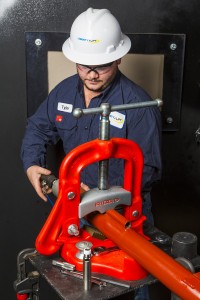
Liberty’s gas lift experts are proficient in gas lift design, nodal analysis and optimization. Our patent-pending HyRate method of gas lift not only helps optimize your well’s production but also eliminates the need for workovers to switch from annular to tubing. Our team also has the expertise to service wells with initial and subsequent tubing/installations and wireline interventions. Our field service crews are experienced for resolving life cycle maintenance and repair issues on gas lift as well as other artificial lift systems.
Benefits
- Low operating costs
- Wireline or tubing retrievable
- Simple to operate
- Minimal moving parts
- Handles high solids content in flow
- Effective in deviated holes
- Continuous or intermittent
Features
Mandrels
- Meet API 19G1 standards
- Available as side-pocket or tubing retrieval
- Round or oval body designs
- 1″ and 1 1/2″ ID profiles with slim-line models available
Valves
- Wireline or tubing retrieval
- 1″ and 1 1/2″ OD with slim-line models available
- Flow performance-tested assemblies
Packers
- Tubing or wireline set
- Provides a seal between the tubing and the casing
- Prevents downhole movement of the tubing string
- Improve well flow and production rate
- Limit well control to the tubing at the surface for safety purposes
- Hold well-servicing fluid in the casing annulus
Technical Specifications
Please click on the tabs below to view the technical specifications for that Liberty Lift product.
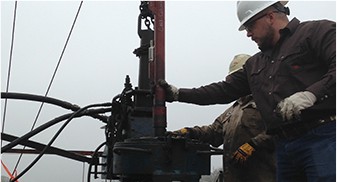
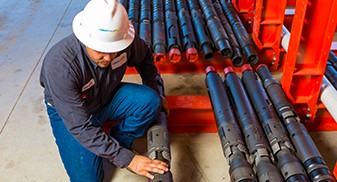
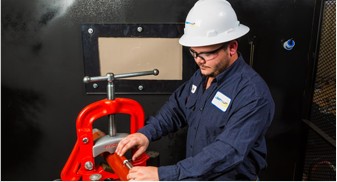
WHAT IS GAS LIFT?
Gas lift is a field-proven artificial lift method that dates back at least five decades. It relies on external high-pressure gas injected into the wellbore to stimulate and lift produced fluids to the surface for separation and further processing. The lift principal reduces fluid density within the casing and scrubs the liquids to help separate them from the well’s solids content. Gas lift can be used with either intermittent flows or continuous service. Further, it can extract well fluids either with injection of high-pressure gas down the tubing for annular lift or down the annulus for conventional tubing lift. It is perhaps the industry’s best lift method for handling sand and heavy solids residue, succeeding without any negative impact to its production like experienced with electrical submersible pumps (ESPs).
THE MAIN COMPONENTS OF GAS LIFT SYSTEMS
MANDRELS, VALVES & PACKERS The total gas lift assembly includes mandrels, valves and a packer to provide a seal between the tubing OD and the casing ID. Depending on the depth of the producing zone, multiple gas lift valves can be set on the mandrels inserted into the wellbore inside or outside the tubing. The spacing is established using a computer design program based on projected bottom hole pressures, temperatures and desired production. Continuous flow gas lift is used primarily in high volume wells and is dependent on an adequate gas supply which can either be compressed or available in high pressures. This method is utilized offshore in conventional drilled wells or, increasingly, onshore in both conventional and unconventional horizontal wells. Intermittent lift is usually implemented when bottom hole pressure is low and when there is a ‘slug’ or situation within the well where flow is impeded. This method is not as common as continuous and can be problematic with surface gas surges or high sand content.
ADVANTAGES OF GAS LIFTS
Gas lift methodology has several advantages, especially in the early stages of a well’s production when IP is critical for optimized financial returns. Because of its relatively simple design with few moving parts, gas lift normally has low operating costs and is uncomplicated to operate. Gas Lift is cost-effective with few maintenance or repair issues regardless of sand or produced solids. Annular gas lift is usually more impactful during the early well production stage. The annulus diameter allows for increased flow area to assist in unloading the well during initial production. Gas flows through internally-mounted mandrels during this phase. As the unloading continues and the effective bottomhole pressure diminishes, there is a need to change over from annular flow to conventional tubing flow. This has historically been a disadvantage of gas lift. Because of the internal position and diameter of the mandrel, and the normal protrusion of the gas valve in the tubing string to produce annular lift, there is often insufficient clearance to change the configuration without pulling the entire tubing string and mandrels. Consequently, a workover rig must be used. This is expensive and time consuming, resulting in a production shutdown, use of specialized equipment and increased manpower for this operation. A configuration using less intrusive side pocket mandrels is available, but that assembly is also an expensive alternative.
ENTER HYRATE™ - LIBERTY LIFT’S EFFECTIVE GAS LIFT SOLUTION
This is the problem our patent-pending gas lift system solves with valves included in the externally-mounted capsule mandrel assembly which allows both annular and conventional flow through the tubing.
Need more information on Liberty Lift’s Gas Lift Systems?
Call us at 713-575-2300 or email us at sales@libertylift.com
Liberty Lift has locations in the major producing regions of the United States.


